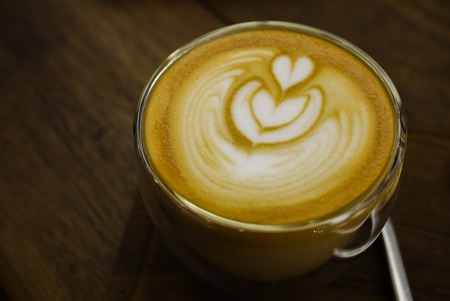Introduction: Brewing Connections in Modern Indian Cafés
Step into any bustling Indian city, from Mumbai’s leafy lanes to Bangalore’s tech corridors, and you’ll find cafés that are more than just stops for a quick chai or filter coffee. Today’s Indian cafés are vibrant social and entrepreneurial hubs, mirroring the nation’s digital evolution and its cosmopolitan urban culture. As India leaps forward with smartphone penetration and social media trends, these cafés have transformed into dynamic meeting points where ideas percolate as freely as the coffee. Whether it’s a group of startup founders brainstorming over masala chai or college students curating their Instagram stories with latte art, modern Indian cafés capture the pulse of a young, ambitious, and digitally connected India. Here, traditions blend seamlessly with innovation—local flavours meet global café concepts, and conversations flow from cricket scores to coding hacks. In this series, we explore how these spaces not only cater to diverse palates but also nurture creativity, community, and enterprise in an ever-evolving urban landscape.
2. Social Media Chai Pe Charcha
In today’s digital Bharat, the humble chai pe charcha has moved far beyond street-side tapris and found a new home on social media platforms. Cafés across India are embracing Instagram, Facebook, and WhatsApp to foster vibrant communities, spark conversations, and create a buzz that extends from Connaught Place to Koramangala. The digital leap has transformed how cafés engage with their customers, blending traditional Indian hospitality with cutting-edge technology.
Instagram: Brewing Visual Stories
Instagram’s reel culture has enabled Indian cafés to visually showcase everything from frothy filter coffee art to quirky wall murals. Viral reels featuring latte art competitions, barista dance-offs, or even desi fusion snacks have amplified café branding at lightning speed. Trending hashtags like #MumbaiCafés or #DelhiCoffeeCulture make it easier for local patrons to discover new spots and special events.
Facebook: Building Communities, One Like at a Time
Facebook remains a platform where neighbourhood cafés cultivate loyal customer bases through curated groups, event pages, and interactive polls. From announcing live ghazal nights to crowdsourcing feedback for new menu items, café owners use Facebook as a virtual adda—where opinions brew just as strongly as the chai itself.
WhatsApp: The Hyperlocal Connect
WhatsApp Business has become the go-to tool for hyperlocal engagement. Many cafés now send daily specials, reservation confirmations, and exclusive offers directly to customers’ phones. In cities like Bengaluru and Pune, pre-ordering masala chai or samosa platters via WhatsApp is as common as catching up on family group chats.
Impact of Social Media on Indian Cafés
| Platform | Key Engagement Strategy | Cultural Relevance |
|---|---|---|
| Viral reels & Hashtag campaigns | Showcasing café vibe & attracting youth | |
| Groups & Event promotions | Community building & nostalgia factor | |
| Direct messaging & Offers | Hyperlocal connections & quick service |
The rise of these platforms has revolutionised the way Indian cafés interact with their audience—turning every cup of chai into a shareable moment, every dosa platter into potential viral content, and every customer into an online ambassador. It’s not just about serving beverages anymore; it’s about brewing connections in the digital age.

3. Startup Culture: Café Corners as Entrepreneurial Addas
If you stroll through the buzzing lanes of Bengaluru’s Indiranagar or Mumbai’s Bandra, you’ll spot a familiar sight: young founders huddled over laptops, animatedly discussing pitch decks and MVPs, all with a strong chai or filter coffee in hand. Indian cafés have rapidly evolved into more than just spaces for sipping masala chai or munching on samosas—they have become the heart of urban India’s startup culture. These café corners now double up as “addas”—a uniquely Indian term for informal hangout spots where creativity flows as freely as the conversations.
The blending of work and leisure is striking. Many cafés, from Kolkata’s intellectual haunts to Delhi’s bohemian spaces, offer free Wi-Fi, charging points, and even private booths. It’s common to find aspiring entrepreneurs networking with angel investors or brainstorming with teammates amidst the aroma of freshly ground coffee beans and street food fusion snacks. The casual yet energetic atmosphere encourages experimentation and risk-taking, reflecting the jugaad (innovative problem-solving) spirit that defines India’s startup ecosystem.
What sets these Indian cafés apart is their inclusivity and accessibility. Whether you are an IIT graduate plotting your next fintech unicorn or a freelance designer hustling between gigs, the café culture welcomes all dreamers. Many establishments host open mic nights, coding marathons, and “chai pe charcha” (discussion over tea) sessions—offering grassroots opportunities to connect, collaborate, and co-create. For India’s new generation of founders, these spaces are not just backdrops but catalysts for innovation, where ideas percolate and businesses brew alongside steaming cups of South Indian filter coffee.
4. Digital Payments & Desi Innovations
India’s café culture is evolving at the speed of digital light, with technology transforming the way chai and coffee are ordered, paid for, and experienced. The adaptation of digital payments is perhaps the most visible shift—UPI (Unified Payments Interface) and QR code payments have become as common as cutting chai. From the smallest roadside tapri to urban specialty cafés in Bengaluru or Mumbai, cashless transactions are empowering both café owners and their customers with unmatched convenience and transparency.
How Indian Cafés Are Embracing Digital Convenience
| Technology | Functionality | Benefits for Owners | Benefits for Patrons |
|---|---|---|---|
| UPI Payments | Instant bank-to-bank transactions via mobile apps | Faster checkout, reduced cash handling | No need for cash; instant receipts |
| QR Code Payments | Scan-and-pay at the counter or table | Reduces transaction errors; easy reconciliation | Contactless, quick payments |
| Loyalty Apps | App-based rewards and offers | Customer retention; personalized marketing | Simplified reward tracking; exclusive deals |
The “Desi” Touch: Local Innovation in Action
What sets Indian cafés apart is their knack for blending global technology with local flavours. Many chains and indie outlets now offer app-based loyalty programs tailored to Indian tastes—think cashback on filter coffee refills or exclusive deals during cricket matches. Some cafés use WhatsApp for order confirmations or feedback, tapping into platforms already popular with desi patrons. This fusion of high-tech solutions with local preferences ensures digital adoption isn’t just efficient but also culturally relevant.
Empowering Small Businesses & Startups
The accessibility of UPI and low-cost QR tech means that even small-town cafés can leapfrog into the digital age without hefty investments. Digital records help manage inventory, track sales trends, and understand customer preferences—all from a simple smartphone. For startups entering the café scene, these tools lower entry barriers and enable rapid scaling while keeping operations streamlined.
The Future: More Than Just Payments
As Indian consumers grow more comfortable with digital interactions, cafés are exploring AI-driven chatbots for orders, personalized push notifications for specials, and seamless integration between online delivery platforms and in-house experiences. Ultimately, the marriage of digital payments with desi innovation is not just making life easier—it’s setting new benchmarks for how India enjoys its daily cup.
5. Local Flavours Meet Global Trends
Indian cafés today have become vibrant laboratories where cherished local traditions mingle with global café culture, resulting in a truly distinctive experience for urban youth and seasoned coffee lovers alike. The aroma of freshly brewed filter kaapi, once restricted to South Indian households or small roadside stalls, now finds its place alongside international espresso blends and specialty brews on café menus. Similarly, masala chai—a timeless symbol of Indian hospitality—has been reinvented as everything from frothy chai lattes to artisanal cold brews, appealing to the experimental palates of Gen Z and millennials.
Culinary Innovation: From Dosa Wraps to Sourdough Sandwiches
Menus at modern Indian cafés are no longer limited to the usual samosas or cookies. Instead, they feature creative fusions like dosa wraps stuffed with grilled chicken, sourdough sandwiches slathered with homemade chutneys, and even gulab jamun cheesecakes. This blend of regional recipes and Western presentation not only excites local customers but also intrigues foreign visitors, turning every visit into an Instagram-worthy event.
Ambience: Reflecting Heritage with a Contemporary Twist
The décor of many new-age Indian cafés is thoughtfully curated to represent this fusion ethos. You might spot hand-painted Warli art beside minimalist Scandinavian furniture or find brass filter coffee sets sitting on reclaimed wood tables. Such spaces create a sense of nostalgia while also serving as a canvas for innovation, making each outlet unique in both look and spirit.
Community & Conversation: Where Past Meets Present
This harmonious blend extends beyond food and interiors. Many cafés are now hubs for community events—be it open-mic poetry nights in Hindi or workshops on sustainable coffee farming. Through these initiatives, café owners celebrate India’s cultural richness while embracing global trends that foster inclusivity, sustainability, and creativity. In doing so, they ensure that Indian cafés are not just places for a quick caffeine fix but dynamic spaces where local flavours meet global aspirations.
6. Challenges and Future Pathways
Navigating the Digital Divide
As Indian cafés embrace digital transformation, one of the most prominent hurdles remains the digital divide. While urban coffeehouses in metros like Bengaluru, Mumbai, and Delhi have seamlessly integrated Wi-Fi, contactless payments, and social media-driven promotions, many cafés in Tier 2 and Tier 3 cities still grapple with inconsistent internet connectivity and limited digital infrastructure. This disparity is not just technological but also socioeconomic—access to smartphones, digital literacy, and comfort with online tools vary widely across regions and age groups.
Regional Disparities and Local Realities
Regional differences further compound these challenges. For instance, a café in Kochi may enjoy robust tourist footfall due to Instagram-worthy aesthetics and savvy geo-targeted campaigns, whereas a homely chai tapri in rural Uttar Pradesh might rely on word-of-mouth within the local community. The “digital India” narrative must thus be balanced with ground realities—café owners outside metros often face higher costs for adopting new technologies and may lack access to startup funding or professional training that their urban counterparts take for granted.
Forecasting Future Trends: Hyperlocal Innovation & Inclusive Growth
Despite these obstacles, the future for Indian cafés glimmers with possibility. We can expect hyperlocal innovation to take centre stage—cafés will increasingly blend traditional hospitality (think filter kaapi or masala chai) with tailored digital experiences such as vernacular language apps, region-specific loyalty programmes, and collaborations with local artisans. As UPI-based payments become even more ubiquitous and government initiatives push for digital inclusivity, more small-town cafés will join the digital mainstream. Moreover, next-gen café entrepreneurs are likely to harness AI-powered customer insights, eco-conscious tech solutions, and cross-platform storytelling to create both vibrant offline spaces and dynamic online communities.
Ultimately, as Indian cafés continue to evolve at the intersection of tradition and technology, their resilience lies in adapting global trends to local flavours—ensuring that every cup served is not just a beverage but an experience shaped by innovation, inclusivity, and authentic Indian warmth.

